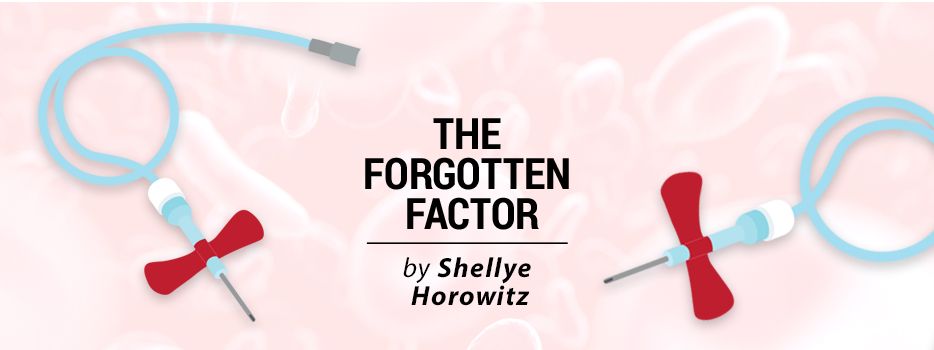Keeping Moms and Babies Safe During Pregnancy and Birth

I have seen it many times. When a woman in a family with hemophilia gets pregnant, some feel OK emotionally, but for many, it causes a moment of panic, and sometimes sheer terror.
What have they done? They are so scared that they passed hemophilia on to their child. They feel tremendous guilt as they wait to discover if their child will have the mutated gene that causes hemophilia.
If the mom has hemophilia or is a carrier of hemophilia, there is a 50% chance that the mutated gene that causes hemophilia will be passed to their child, male or female. If the dad has hemophilia, the mutated gene will always be passed to his daughters, but not his sons. Sons who inherit the hemophilia mutation will have hemophilia.
Daughters who inherit the mutated gene may have hemophilia, depending on what percentage of the mutated gene is turned off during the lyonization process, also referred to as “X-inactivation” If more of the nonmutated X chromosomes stay on, they may be a carrier of the disease and not manifest hemophilia. If more of the mutated chromosomes stay on, the daughters will have hemophilia, too.
Male babies, female babies
When hemophilia runs in families, the concerns more often center around male babies. Sadly, in some cases, there is only concern for male babies. This is scary, and to be blunt, dangerous.
When a woman is pregnant and known to carry hemophilia or have hemophilia herself, many issues must be considered. Protecting a male child is critical, but not the only consideration that must be addressed. Some doctors will test male children before birth to diagnose hemophilia before delivery. Sometimes this informs the methods used in the delivery process.
It is less common, though sometimes encouraged, to test female children before birth to see if they have the mutated gene that causes hemophilia. Care should be taken during the birth of any baby who has the possibility of having a mutated hemophilia gene.
We cannot forget that both male and female children of female carriers have a 50% chance of having a hemophilia mutation. Furthermore, all of the female children of male hemophiliacs are known to have a hemophilia mutation. They are obligate carriers, and their safety must also be addressed.
Testing all children
All children of women who have the hemophilia mutation, and all daughters of men with hemophilia, should be tested after birth for factor levels as soon as possible. This will help determine if they have hemophilia, and what the severity level is.
It is critical to note that many women do have factor levels low enough for a hemophilia diagnosis, and female infants cannot be left out of this testing. It is imperative to know factor levels for all individuals who carry the hemophilia mutation. This is to keep them safe.
Testing and protecting moms
If a woman is known to carry the hemophilia mutation, or if it is suspected, her factor levels must also be tested before she gives birth. Often carriers of the hemophilia mutation will need access to factor replacement products during and after the birthing process. This can be necessary to keep the mother safe.
It is so important that both the mother and child are kept safe during childbirth. Especially with hemophilia A, factor levels can drop dramatically after birth. Women who carry hemophilia A can have their levels increase during pregnancy, which is caused by pregnancy hormones.
When the hormones drop dramatically after birth, so can factor levels — increasing the mother’s risk of bleeding. I have known far too many female carriers of hemophilia who almost lost their lives during childbirth due to a lack of diagnosis or a treatment plan for their own hemophilia.
Safe pregnancies for mother and child
If you or someone you know are expecting a child and hemophilia runs in the family, it is important to connect early with a hemophilia treatment center — before the delivery — to ensure that plans are in place to protect the mom (if she has the mutation) and the infants (male and female). These plans are critical so that medical teams understand and treat any bleeding in appropriate ways.
All individuals should be kept as safe as possible. Bringing a new life into this world is a precious gift. Those first moments should be protected and full of joy.
***
Note: Hemophilia News Today is strictly a news and information website about the disease. It does not provide medical advice, diagnosis, or treatment. This content is not intended to be a substitute for professional medical advice, diagnosis, or treatment. Always seek the advice of your physician or another qualified health provider with any questions you may have regarding a medical condition. Never disregard professional medical advice or delay in seeking it because of something you have read on this website. The opinions expressed in this column are not those of Hemophilia News Today or its parent company, Bionews, and are intended to spark discussion about issues pertaining to hemophilia.







Leave a comment
Fill in the required fields to post. Your email address will not be published.